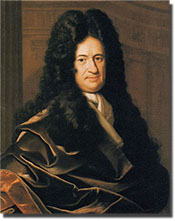Lüneburg
Regierungsbezirk (administrative district), northeastern Lower Saxony Land (state), north-central Germany. Lüneburg is bordered by the Länder of Schleswig-Holstein and Hamburg to the north and Mecklenburg-West Pomerania and Saxony-Anhalt to the east, the Regierungsbezirke of Braunschweig and Hannover (Hanover) to the south, and Weser-Ems, Bremen Land, and the North Sea to the west. The largest of four districts in Lower Saxony, it occupies an area of 5,925 sq mi (15,346 sq km) and is coextensive with portions of the former German state of Hannover and the larger historic region of Saxony. Its contemporary boundaries were created in 1977 by an administrative reorganization merging the smaller Regierungsbezirke of Stade (west) and Lüneburg (east). Lüneburg Regierungsbezirk takes its name from that of the second largest city and administrative seat of the district.
Lüneburg lies on an extensive low plateau built of glacial sand and gravel deposits, set between the parallel courses of the lower Elbe River to the north and the valley of the Aller and Weser rivers to the south. It merges westward into the alluvial plains and marshlands bordering the North Sea and the Elbe and Weser estuaries, among them the regions of Wursten, Hadeln, Kehdingen, and Altes Land. To the east the plateau slopes into the lower Altmark territory of eastern Germany. Celle, the largest city of the district, is located at the southern fringe on the Aller River, while Lüneburg lies on the steeper northeast edge.
The western third of the plateau is composed of the Stade Geest, dry sandy heath and wooded land interspersed with low-lying peat bogs. Pastureland used for cattle and sheep farming dominates the landscape, which averages between 35 and 165 ft (10 and 50 m) in elevation. The eastern two-thirds of the plateau, known as the Lüneburger Heide (Luneburg Heath), has an average altitude of 260 to 330 ft. Great expanses of heather and juniper bushes are topped by morainic hills; the highest, the Wilseder Berg, rises to 554 ft (169 m). The traditional sources of income are sheep and cattle farming, forestry, and beekeeping. More recently the production of potatoes and rye has expanded with the introduction of artificial fertilizers to the sandy soils. More fertile sandy-loam soils in the lowland surrounding Uelzen, a town on the Elbe-Seiten-Kanal, support sugar beet and wheat crops. Natural gas fields are found west of Uelzen. Much of the plateau's least productive land is planted in conifer plantations. Tourism is growing as the Lüneburger Heide becomes an increasingly popular holiday resort, especially among the people of Hamburg. The region's most beautiful scenery can be seen during the August flowering season in the 77-sq-mi (200-sq-km) Lüneburger Heide Nature Reserve near the village of Wilsede.
The population density of Lüneburg Regierungsbezirk is quite low, averaging 246 persons per sq mi (95 per sq km); many areas of the Lüneburger Heide have fewer than 50 persons per sq mi (20 per sq km). The majority of the population are descendants of the western Saxons and speak a Low German dialect. Nearly 90 percent of the people are Protestants. The Lüneburger Heide is notable for its traditional redbrick heath farmhouses and for the numerous Hünengräber (ancient megalithic structures) known as "graves of giants." Pop. (1989 est.) 1,450,666.
Copyright © 1994-2002 Encyclopædia Britannica, Inc.
![]()
Sources
- Encylopedia Britannica 2002, Expanded Edition DVD
Web





